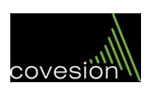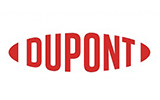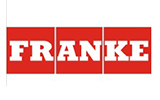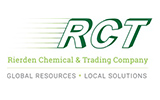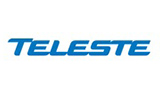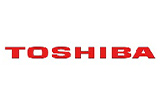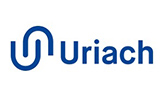Chapter 1. Executive Summary
1.1. Market Snapshot
1.2. Global & Segmental Market Estimates & Forecasts, 2017-2026 (USD Billion)
1.2.1. SDN Orchestration Market, by Region, 2017-2026 (USD Billion)
1.2.2. SDN Orchestration Market, by Component, 2017-2026 (USD Billion)
1.2.3. SDN Orchestration Market, by Organization Size, 2017-2026 (USD Billion)
1.2.4. SDN Orchestration Market, by End User, 2017-2026 (USD Billion)
1.3. Key Trends
1.4. Estimation Methodology
1.5. Research Assumption
Chapter 2. Global SDN Orchestration Market Definition and Scope
2.1. Objective of the Study
2.2. Market Definition & Scope
2.2.1. Scope of the Study
2.2.2. Industry Evolution
2.3. Years Considered for the Study
2.4. Currency Conversion Rates
Chapter 3. Global SDN Orchestration Market Dynamics
3.1. SDN Orchestration Market Impact Analysis (2018-2026)
3.1.1. Market Drivers
3.1.2. Market Challenges
3.1.3. Market Opportunities
Chapter 4. Global SDN Orchestration Market Industry Analysis
4.1. Porter's 5 Force Model
4.1.1. Bargaining Power of Suppliers
4.1.2. Bargaining Power of Buyers
4.1.3. Threat of New Entrants
4.1.4. Threat of Substitutes
4.1.5. Competitive Rivalry
4.1.6. Futuristic Approach to Porter's 5 Force Model (2016-2026)
4.2. PEST Analysis
4.2.1. Political
4.2.2. Economical
4.2.3. Social
4.2.4. Technological
4.3. Investment Adoption Model
4.4. Analyst Recommendation & Conclusion
Chapter 5. Global SDN Orchestration Market, by Component
5.1. Market Snapshot
5.2. Global SDN Orchestration Market by Component, Performance - Potential Analysis
5.3. Global SDN Orchestration Market Estimates & Forecasts by Component 2016-2026 (USD Billion)
5.4. SDN Orchestration Market, Sub Segment Analysis
5.4.1. Solutions
5.4.2. Services
Chapter 6. Global SDN Orchestration Market, by Organization Size
6.1. Market Snapshot
6.2. Global SDN Orchestration Market by Organization Size, Performance - Potential Analysis
6.3. Global SDN Orchestration Market Estimates & Forecasts by Organization Size 2016-2026 (USD Billion)
6.4. SDN Orchestration Market, Sub Segment Analysis
6.4.1. Large Enterprises
6.4.2. Small & Medium-Sized Enterprises (SMES)
Chapter 7. Global SDN Orchestration Market, by End User
7.1. Market Snapshot
7.2. Global SDN Orchestration Market by End user, Performance - Potential Analysis
7.3. Global SDN Orchestration Market Estimates & Forecasts by End User 2016-2026 (USD Billion)
7.4. SDN Orchestration Market, Sub Segment Analysis
7.4.1. Cloud Service Providers
7.4.2. Telecom Service Providers
7.4.3. Others
Chapter 8. Global SDN Orchestration Market, Regional Analysis
8.1. SDN Orchestration Market, Regional Market Snapshot
8.2. North America SDN Orchestration Market
8.2.1. U.S. SDN Orchestration Market
8.2.1.1. Component breakdown estimates & forecasts, 2016-2026
8.2.1.2. Organization Size breakdown estimates & forecasts, 2016-2026
8.2.1.3. End User breakdown estimates & forecasts, 2016-2026
8.2.2. Canada SDN Orchestration Market
8.3. Europe SDN Orchestration Market Snapshot
8.3.1. U.K. SDN Orchestration Market
8.3.2. Germany SDN Orchestration Market
8.3.3. Rest of Europe SDN Orchestration Market
8.4. Asia-Pacific SDN Orchestration Market Snapshot
8.4.1. China SDN Orchestration Market
8.4.2. India SDN Orchestration Market
8.4.3. Japan SDN Orchestration Market
8.4.4. Rest of Asia Pacific SDN Orchestration Market
8.5. Latin America SDN Orchestration Market Snapshot
8.5.1. Brazil SDN Orchestration Market
8.5.2. Mexico SDN Orchestration Market
8.6. Rest of The World SDN Orchestration Market
Chapter 9. Competitive Intelligence
9.1. Top Market Strategies
9.2. Company Profiles
9.2.1. Juniper Networks
9.2.1.1. Key Information
9.2.1.2. Overview
9.2.1.3. Financial (Subject to Data Availability)
9.2.1.4. Product Summary
9.2.1.5. Recent Developments
9.2.2. Hewlett Packard Enterprise
9.2.3. Ciena Corporation
9.2.4. Nokia
9.2.5. Anuta Networks
9.2.6. Qualisystems
9.2.7. Huawei
9.2.8. Cisco Systems
9.2.9. Netcracker
9.2.10. Cenx
Chapter 10. Research Process
10.1. Research Process
10.1.1. Data Mining
10.1.2. Analysis
10.1.3. Market Estimation
10.1.4. Validation
10.1.5. Publishing
10.2. Research Attributes
10.3. Research Assumption




